EarthSeeds - Humanity's Ultimate Purpose in the Evolution of Life
EarthSeeds Resources
Non-Fiction
Star Ark:
A Living, Self-Sustaining Spaceship
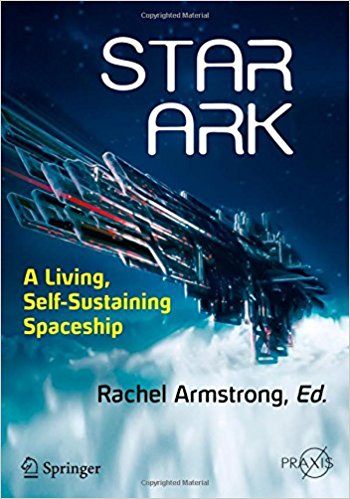
by Rachel Armstrong
Amazon
As space ventures have become more numerous, leading scientists and theorists have offered ways of building a living habitat in a hostile environment, taking an ‘ecosystems’ view of space colonization. The contributors to this volume take a radical multi-disciplinary view of the challenge of human space colonization through the ongoing project Persephone. This book fundamentally challenges prevalent ideas about sustainability and proposes a new approach to resource austerity and conservation and providing truly sustainable approaches that are life-promoting. Readers will learn the details of the plans for Persephone – a real project that is part of the company Icarus Interstellar’s plans for the design and engineering of a living interior on a worldship to be constructed in Earth’s orbit within 100 years. Far from being a sterile industrial setup, such as the ISS, or even being a bucolic suburbia as proposed by Gerard O’Neill in the 1970s, this worldship will provide the pre-conditions for sustaining life beyond Earth’s environment, which may also lead to the evolution of non-terrestrial ecologies. Drawing on the principles of ecopoiesis and insights offered by the Biosphere 2 experiment that demonstrated what we have to learn about ecosystem construction, this book proposes first designing the soils of such a space. It should then be possible to set up the conditions that a first generation of colonists may experience in leaving our solar system to find new worlds to settle - perhaps in spreading life throughout the universe. Although the book takes a unique view of ecology and sustainability within the setting of a traveling starship it is equally concerned with the human experience on artificial worlds. Chapters come from a range of multi disciplinary thinkers who shed light on the brave new future ahead from different angles.
Earth in Human Hands
Shaping Our Planet's Future
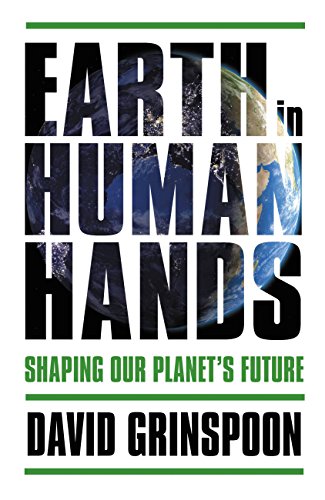
David Grinspoon
Amazon
For the first time in Earth's history, our planet is experiencing a confluence of rapidly accelerating changes prompted by one species: humans. Climate change is only the most visible of the modifications we've made--up until this point, inadvertently--to the planet. And our current behavior threatens not only our own future but that of countless other creatures. By comparing Earth's story to those of other planets, astrobiologist David Grinspoon shows what a strange and novel development it is for a species to evolve to build machines, and ultimately, global societies with world-shaping influence.
Without minimizing the challenges of the next century, Grinspoon suggests that our present moment is not only one of peril, but also great potential, especially when viewed from a 10,000-year perspective. Our species has surmounted the threat of extinction before, thanks to our innate ingenuity and ability to adapt, and there's every reason to believe we can do so again.
Our challenge now is to awaken to our role as a force of planetary change, and to grow into this task. We must become graceful planetary engineers, conscious shapers of our environment and caretakers of Earth's biosphere. This is a perspective that begs us to ask not just what future do we want to avoid, but what do we seek to build? What kind of world do we want? Are humans the worst thing or the best thing to ever happen to our planet? Today we stand at a pivotal juncture, and the answer will depend on the choices we make.
The Purpose and Future of Life
The Science and Ethics of Seeding the Universe
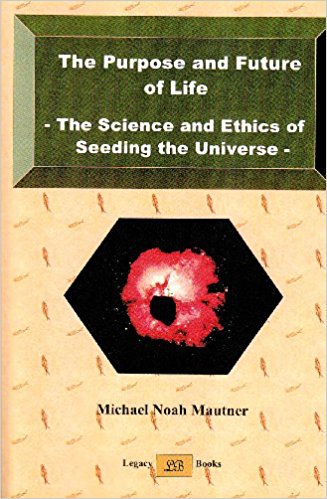
by Michael Noah Mautner
Amazon
The future of life in the universe is an important subject of astrobiology. In this new popular science title, a well recognized researcher describes how we can seed new solar systems with microbial representatives of our family of organic life. The book also describes a life-centered astroethics that will motivate these missions. It describes the unity of all gene/protein life: a common ancestry, a special place in Nature, and a shared future. As part of this family, it is our purpose to safeguard and expand life in the universe. Professor Mautner pioneered research on the fertilities of extra-terrestrial materials in asteroids/meteorites. The results show that many microorganisms and even plants can grow on resources found commonly in space, which are basically similar to Earth materials. The conclusions are significant: If life can flourish on Earth, life can flourish throughout the universe. Based on the results on microbes and meteorites, the author estimates the ultimate amounts of life that our missions can induce in the cosmological future. A life-centered astroethics can assure that our descendants will be there to enjoy this future.
Seeding the Universe With Life
Securing Our Cosmological Future
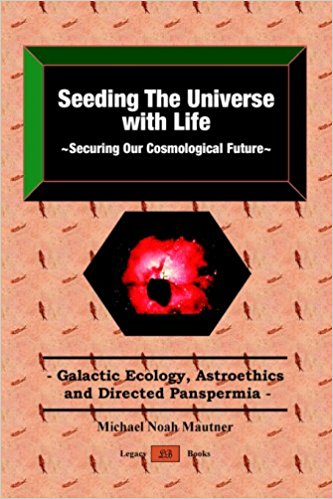
by Michael Noah Mautner
Amazon
Life is unique and for us, precious. Life is endangered on Earth and but has an immense future in space. We can secure this future by seeding new solar systems with microbial representatives of our family of organic gene/protein life. Some of these directed panspermia missions can lead to into intelligent species who will further expand life in space. When the galaxy fills with life, our human existence will find a cosmic purpose.
Securing and expanding life in space is motivated by life-centered panbiotic ethics. These ethics are based on the unique place of complex life in Nature, and on the unity of all life. We belong to life, which implies a human purpose to safeguard, propagate and maximize life in the universe. Filling the galaxy with life can give our human existence a cosmic purpose.
The book describes the science and ethics of expanding life in the galaxy, to secure an immense cosmological future for our family of organic gene/protein life. The author, Prof. M. N. Mautner is a research scientist who investigated these subjects for over 30 years in scientific papers and popular science journals. The book presents these subject in easy popular science style, followed by reprints of the key papers.
Paradise Regained:
The Regreening of Earth
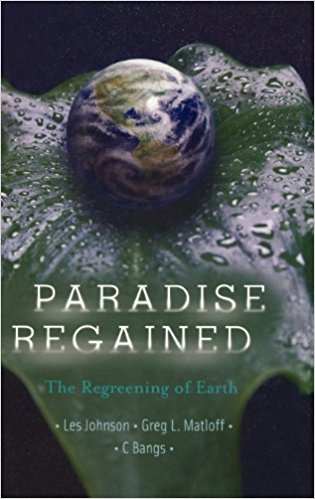
Gregory Matloff, C. Bangs, Les Johnson
Amazon
What was our planet like before the advent of our modern civilization? What effects has our civilization had on the planet and its ecological systems? Paradise Regained discusses these questions and then creates a scenario for the re-greening of Earth. The authors introduce new and innovative ideas on how humankind might use the resources of the solar system for terrestrial benefit. Earth would then become a place for a technologically advanced human civilization to live in synchronization, if not in harmony, with the environment which gave us birth.
Since the formation of our solar system, the resources and ecological state of Earth have undergone many changes. The environmental challenges facing humanity today, as the authors posit them, will not be resolved simply by conservation and Earth-based alternative technologies. Paradise Regained considers the environmental dilemma and highlights the risk of humankind's future extinction from environmental degradation. Human population growth, climate change, and the strained sustainability of the few remaining habitats for wild life are all discussed.
The authors, however, are not discouraged and offer a potential solution through the development of space. Not only will extraterrestrial resources help avert environmental disaster, but will also provide the basis for continued technological and societal progress. The resources of the solar system will help meet our projected industrial needs and feed our industry once terrestrial sources are depleted. Space-based power generation systems will work synergistically with Earth-based conservation. Paradise Regained concludes with the discussion on how closed ecological systems in space will help us to build a prosperous and sustainable future for all humanity.
The Cosmic Connection:
An Extraterrestrial Perspective
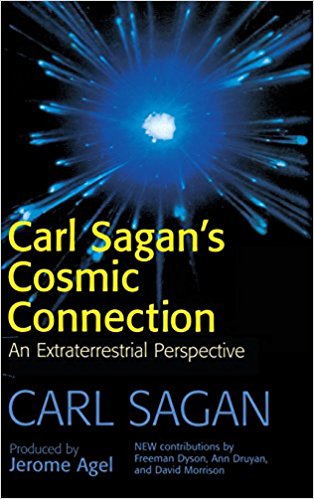
by Carl Sagan
Amazon
In 1973, Carl Sagan published The Cosmic Connection, a daring view of the universe, which rapidly became a classic work of popular science and inspired a generation of scientists and enthusiasts.
In Sagan's typically lucid and lyrical style, he discusses many topics from astrophysics and solar system science, to colonization, terraforming and the search for extraterrestrials. Sagan conveys his own excitement and wonder, and relates the revelations of astronomy to the most profound human problems and concerns: issues that are just as valid today as they were thirty years ago. New to this edition are Freeman Dyson's comments on Sagan's vision and the importance of the work, Ann Druyan's assessment of Sagan's cultural significance as a champion of science, and David Morrison's discussion of the advances made since 1973 and what became of Sagan's predictions. Who knows what wonders this third millennium will reveal, but one thing is certain: Carl Sagan played a unique role in preparing us for them.
Fiction
The Complete Mars Trilogy:
Red Mars, Green Mars, Blue Mars

by Kim Stanley Robinson
Amazon
All three volumes of the worldwide bestselling Mars trilogy.
Mars – the barren, forbidding planet that epitomises mankind’s dreams of space conquest. From the first pioneers who looked back at Earth and saw a small blue star, to the first colonists – hand-picked scientists with the skills necessary to create life from cold desert – Red Mars is the story of a new genesis. It is also the story of how Man must struggle against his own self-destructive mechanisms to achieve his dreams: before he even sets foot on the red planet, factions are forming, tensions are rising and violence is brewing… for civilization can be very uncivilized.
The Songs of Distant Earth
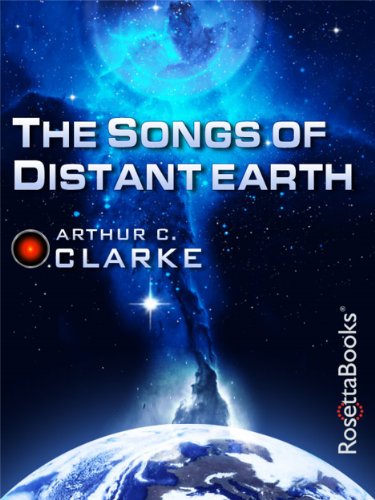
by Arthur C. Clarke
Amazon
More than two thousand years in the future, a small human colony thrives on the ocean paradise of Thalassa-sent there centuries ago to continue the human race before the Earth's destruction. Thalassa's resources are vast-and the human colony has lived a bucolic life there. But their existence is threatened when the spaceship Magellan arrives on their world-carrying one million refugees from Earth, fleeing the dying planet.
Reputed to be Arthur C. Clarke's favorite novel, Songs of Distant Earth addresses several fascinating scientific questions unresolved in their time-including the question of why so few neutrinos from the sun have been measured on Earth. In addition, Clarke presents an inventive depiction of the use of vacuum energy to power spacecraft-and the technical logistics of space travel near the speed of light.
YouTube Video Playlist
Web Links
- COSMIC ANCESTRY
Life comes from space because life comes from life
Brig Klyce
http://www.panspermia.org
- SOLIS: The Society for Life in Space
The Interstellar Panspermia Society
Dedicated to Securing and Expanding Life in Space
Michael Mautner
http://www.panspermia-society.com
- Astroecology
Astroecology is the scientific study of the interactions of life with space environments and resources. Cosmoecology extends these studies to potential life and its resources throughout the universe, for trillions of eons when viable matter will continue to exist, or indefinitely.
http://www.astro-ecology.com
- Astroethics
Principals of Life-Centered Ethics
Michael Mautner
http://www.astroethics.com
- Greater.Earth - A New Perception of Our Planet
Arthur Woods
http://greater.earth
Articles
-
Professor: We have a 'moral obligation' to seed universe with life
Phys.Org / Lisa Zyga
09-02-2010
http://bit.ly/2oy7XAO - Directed Panspermia: Seeding the Galaxy
Centuri Dreams / Paul Gilster
12-02-2010
http://bit.ly/2nFlwL9
- Space Seed: How to Spread Earth's Life Across the Universe
Universe Today / Elizabeth Howell
23-12-2015
http://bit.ly/2oVgcTU
- Michael Mautner discusses how life might expand in the universe
VCU News / Brian McNeill
15-05-2014
http://bit.ly/2oEqSXY
- Astroecologist grows asparagus in alien soil, next step Mars terraforming
Geek.Com / Graham Templeton
06-13-2014
http://bit.ly/2nTotsw
Downloads
- Seeding the Universe with Life - Securing Our Cosmological Future
Michael Noah Mautner, 2000
- SEEDS – Synergizing Earth’s Evolutionary Development Spacewards
Paper IAA-97-IAA.8.2.04 presented at the 48th International Astronautical Congress, Turin, Italy Oct. 6 – 10, 1997.
Arthur Woods, 1997
- Panspermia Video Animation
Karl Sims, 1990
